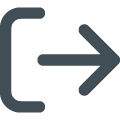Forum Replies Created
-
AuthorPosts
-
TerryDunne
ParticipantHi Julian,
That’s worth trying, thanks for the suggestion.
It’s not a perfect solution for my setup as I don’t allow many trades to start with. However, I can probably increase trade number and at least be able to see the effect of changing depending on market conditions.
Thanks,
Terry
TerryDunne
ParticipantThanks Craig. It seems like I’m not going to be able to do what I’ve been trying to do.
TerryDunne
ParticipantHi Craig,
Thanks for your response, I won’t waste any more time on that.
Is there any way to not use the SetOption function?
Regards,
Terry
TerryDunne
ParticipantHi Rob,
I think potentially being able to turn down leverage and turn up stretch in certain market conditions could (hopefully) be really worthwhile in both improving return and reducing drawdown.
Hopefully some of the expert coders here might have some insights/siggestions.
Best wishes,
Terry
TerryDunne
ParticipantHi Tim,
Your story is very impressive on a number of levels, but I particularly like the bit where you hadn’t given up even when you were telling yourself that you had. I also like the idea that you are creating clarity of purpose from a muddle of ideas (I hope you don’t mind me putting it this way, no offence intended).
All the best mate, I hope we are both here for a long time so I can follow your progress.
TerryDunne
ParticipantYep, just need to choose between the two approaches now
TerryDunne
ParticipantI think that’s a really good point Trent. I guess the issue is always about balancing risk and reward…
TerryDunne
ParticipantI’m starting to form the view that there is more leverage available than I need or want. I ran a back test on my most volatile system using 6:1 leverage and it generated a CAGR of over 60%
 and a max drawdown of over 60% too:-(
and a max drawdown of over 60% too:-(I’m inclined to retest my systems and adjust leverage until drawdown is at the maximum level I have set as acceptable.
TerryDunne
ParticipantI think the easiest and simplest solution is simply to reduce each system’s allocation on a pro rata basis. However, this might under reduce systems that have been around the longest and over reduce systems that are relatively new, because the former will have built up profits and the latter won’t to the same extent . Perhaps one solution to this is to pro rate only the starting allocation and not the accumulated profits?
I don’t think making some subjective decision on best (worst) performing systems is the way to go. If a system is meeting back test expectations, then it should be continued? Perhaps it’s different if so much of the capital has to be removed that it isn’t feasible to keep trading all of the systems currently being used? Then it might make sense to close down the ones that are the worst performed or were the least attractive in back testing.
I think the idea of rebalancing has a lot of merit, but there is the risk of not compounding the systems that have performed the best…
I can’t think what else could be done that isn’t some variant of these options.
Best wishes,
Terry
TerryDunne
ParticipantYou too mate!
TerryDunne
ParticipantFair enough. Although it doesn’t have to be 80%, it could be 180% or 1080%. Very unlikely, but we are discussing very unlikely scenarios here.
Thanks for the interesting discussion, it’s helped me produce a proper process for my position sizing. It’s also helped me reach a decision about shorting. I now don’t have to invest any more time on these issues and can go back to trying to turn Dow Theory into a tradable system.

Good luck to everybody!
Terry
TerryDunne
ParticipantThe most MOC trades I have on any day is 60 from a possible 80. In this situation, it would be safe to ‘pyramid’ profits until I had 50% profit.
However, this assumes that my other systems are fully invested. On this (the 60 trade) day, none of my other systems were invested at all. So it’s safe to say that pyramiding the profits for position sizing up until 50% profit would be entirely feasible – and safe – for me and my systems. However, if I wanted to ‘”pyramid conservatively”, I would not double up after I had 50% profit.
Different stretches and systems will probably mean this “pyramid conservatively” level is different for each of us…
But isn’t this ignoring the bigger risk – one that has actually happened this week rather than could have happened back in 2010? We are all making jokes about having trades that are losing 50%, 60%, up to 100%. Are we not seeing what is right in front of us?
I’m inclined to think that my position sizing methodology is much less risky – and less likely – than shorting.
TerryDunne
ParticipantHi Scott,
They only liquidate if I overdraw, and I haven’t even come close so far…For me to max out, I’d need 80 MOC trades to trigger and so far a huge day for me is 20 trades.
But you’ve pointed me in the right direction – if I download all of my system back tests into a spreadsheet and sort by date, I will be able to count the maximum number of trades on any one day over the 10 year period. While this won’t guarantee the future, it will be indicative, like the other aspects of back testing.
My guess is I won’t even be close, but I’ll post after I do the exercise.
TerryDunne
ParticipantI hear you. Unpleasant but not fatal.
TerryDunne
Participant
A bit of an early morning slap Nick, but these things happen. Somebody wise might say “…next 1,000 trades…”
However, it does reinforce my ‘issue’ with shorting…this is exactly the thing that I have been fretting about, not specifically AMC, but generally. I know I’ll lose some diversification but I’m strongly considering canning my short systems. I just don’t like the unlimited risk.
Ironically, given the discussion on my progress journal, this is much more annoying to me than the (in my opinion) much smaller risk of some huge market wide one day down move. I know there is Black Monday, but even the Flash Crash rebounded on the day.
-
AuthorPosts

